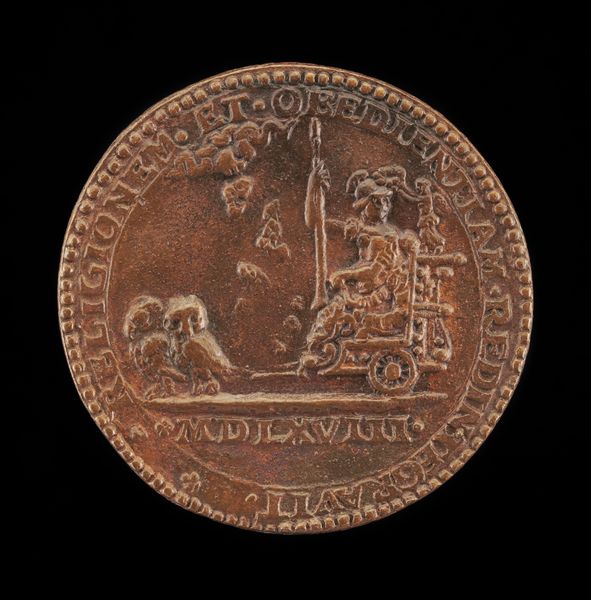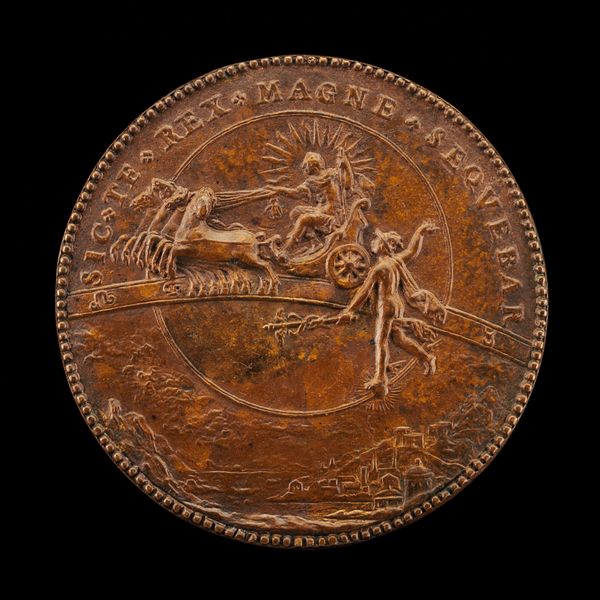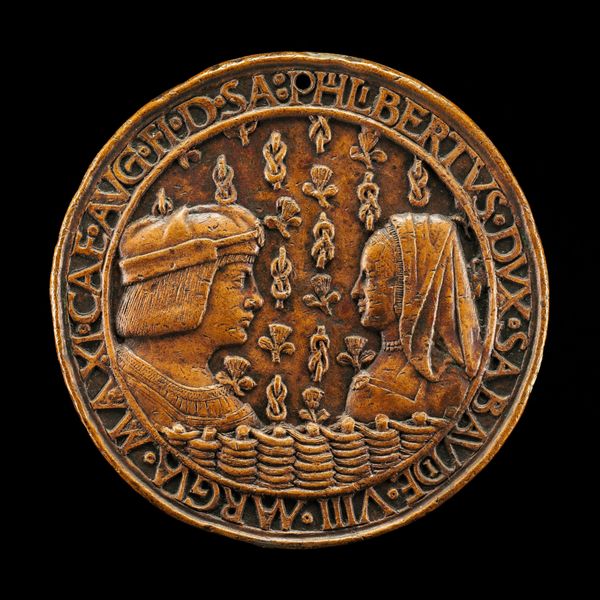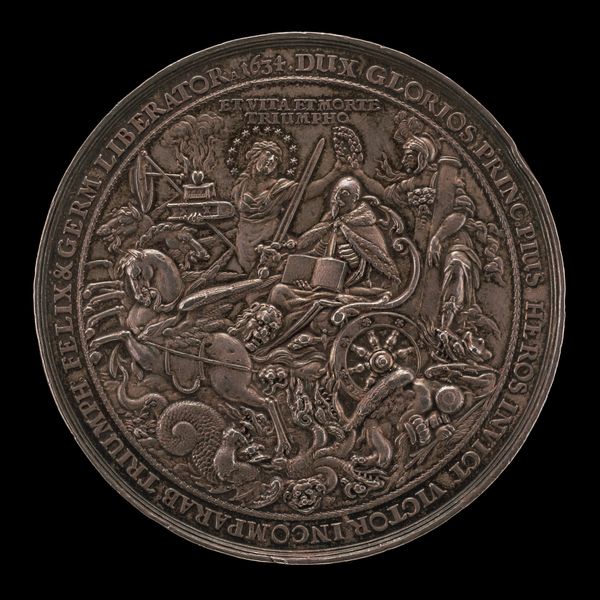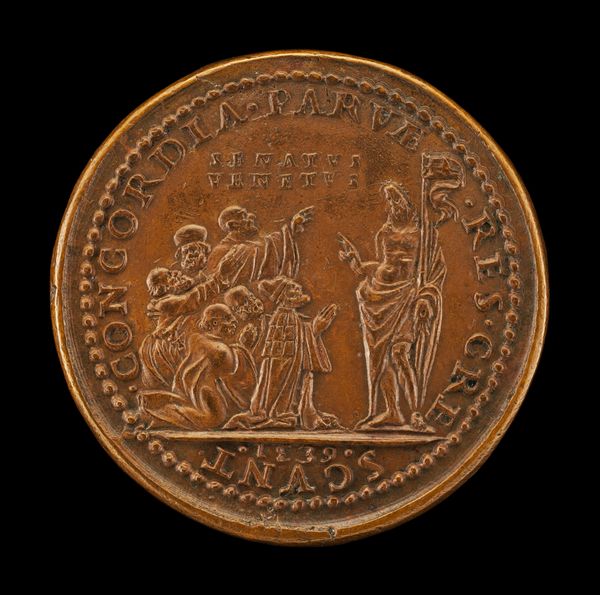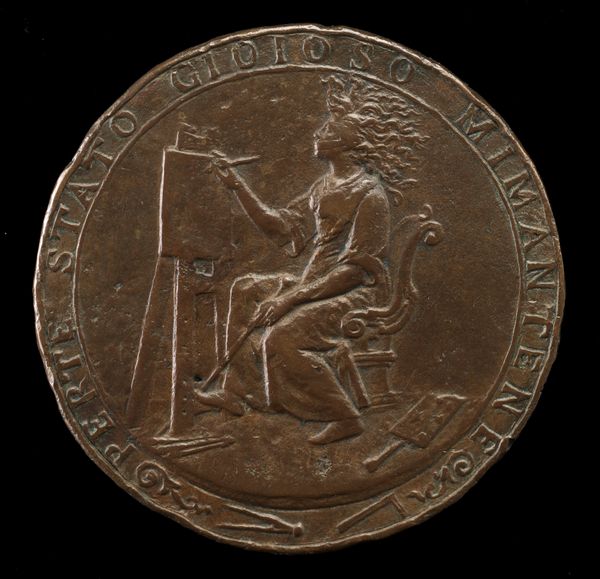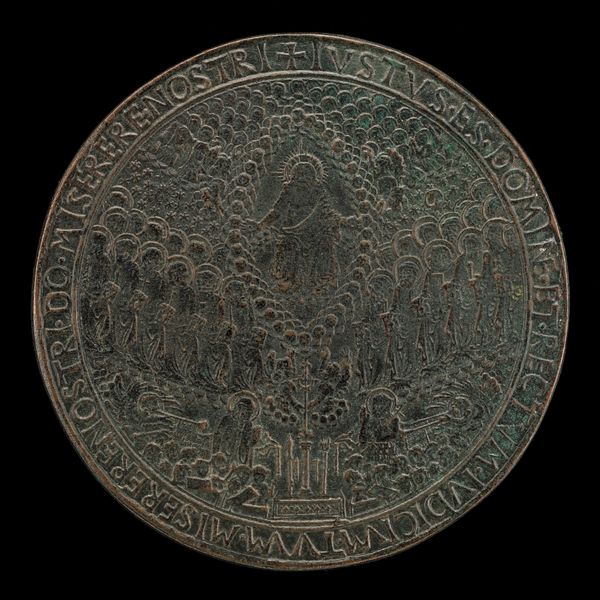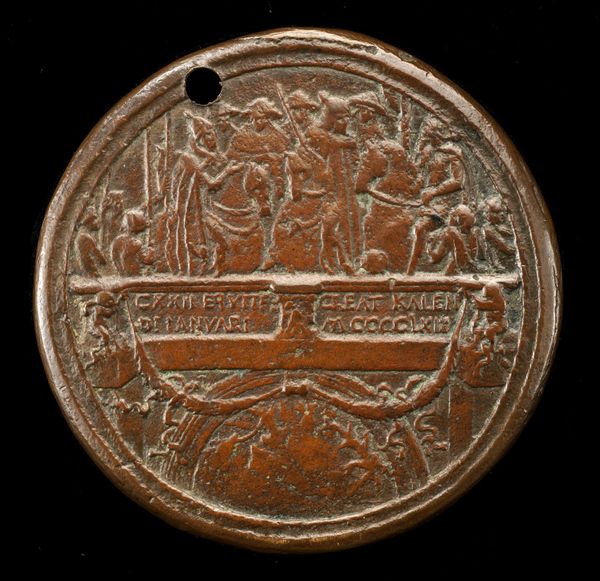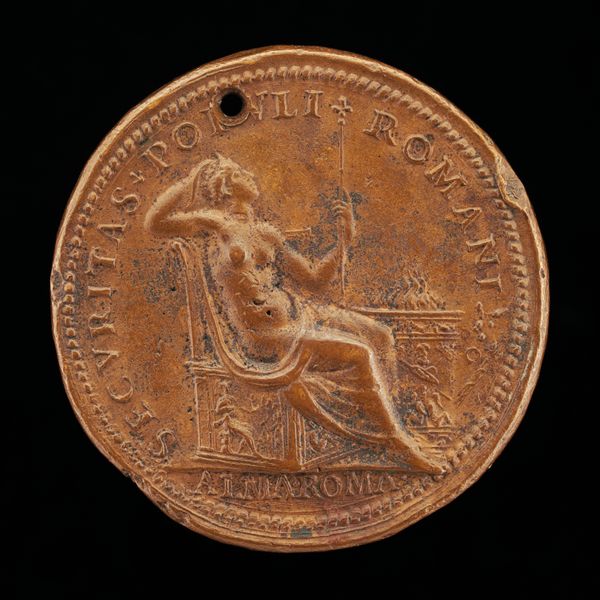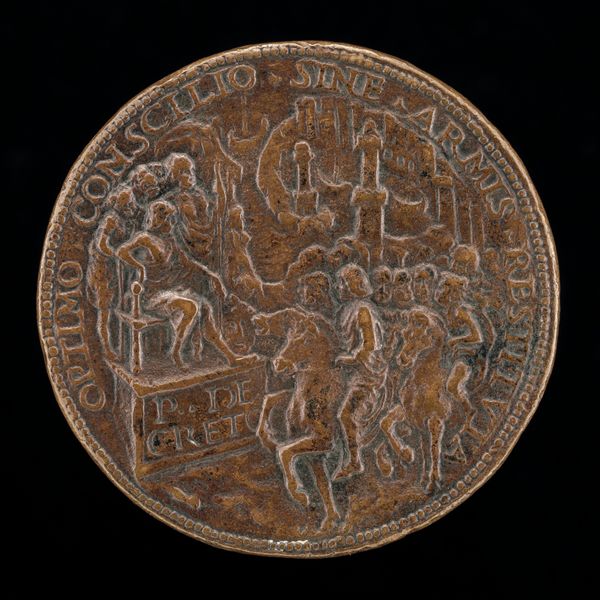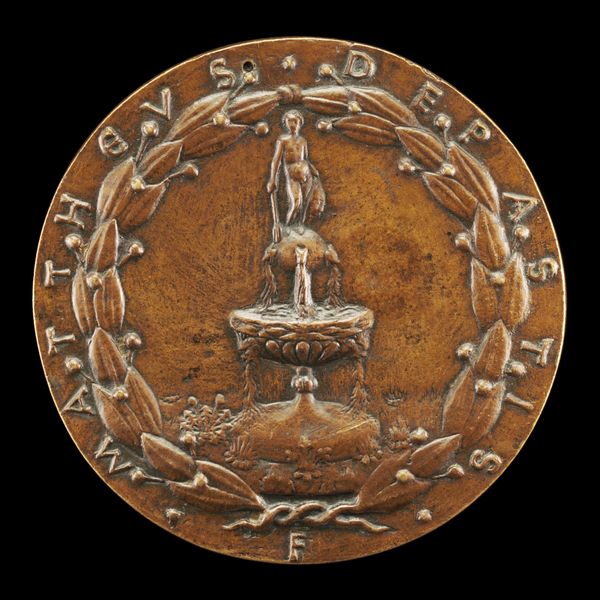![Filiberto II le Beau (the Fair), 1480-1504, 8th Duke of Savoy 1497, and Margaret of Austria, 1480-1530, His Wife [obverse] by Jean Marende](/_next/image?url=https%3A%2F%2Fd2w8kbdekdi1gv.cloudfront.net%2FeyJidWNrZXQiOiAiYXJ0ZXJhLWltYWdlcy1idWNrZXQiLCAia2V5IjogImFydHdvcmtzLzFlNmZjNjZjLWQ0ODItNDA4NC05YmIzLTNmNDZmZGRjMjdiNC8xZTZmYzY2Yy1kNDgyLTQwODQtOWJiMy0zZjQ2ZmRkYzI3YjRfZnVsbC5qcGciLCAiZWRpdHMiOiB7InJlc2l6ZSI6IHsid2lkdGgiOiAxOTIwLCAiaGVpZ2h0IjogMTkyMCwgImZpdCI6ICJpbnNpZGUifX19&w=3840&q=75)
Filiberto II le Beau (the Fair), 1480-1504, 8th Duke of Savoy 1497, and Margaret of Austria, 1480-1530, His Wife [obverse] 1502
0:00
0:00
relief, bronze, sculpture
#
portrait
#
medal
#
stone
#
relief
#
bronze
#
sculpture
#
italian-renaissance
Dimensions: overall (diameter): 10.32 cm (4 1/16 in.) gross weight: 220.02 gr (0.485 lb.) axis: 12:00
Copyright: National Gallery of Art: CC0 1.0
Editor: Here we have a bronze relief medal from 1502, a double portrait of Filiberto II and Margaret of Austria. It strikes me how tactile it appears, almost begging to be held. What stands out to you? Curator: Well, the choice of bronze itself is crucial. Bronze speaks to durability, legacy. These medals weren't just made to be admired; they were crafted to circulate, to be handled. Who had access to bronze in 1502, and what did its manipulation signify? Editor: So, more than just aesthetics, it’s about the bronze itself being a symbol? Curator: Absolutely! The very materiality communicates power. Consider also the labor involved in its creation – the mining, smelting, sculpting. How does this reflect the social hierarchy? Who were the unseen hands behind this representation of nobility? Editor: That’s a perspective I hadn't considered. It prompts me to wonder, was it commissioned to underscore status and wealth? Curator: Precisely. Medals such as these served as markers of dynastic alliance and conspicuous consumption. The production and distribution becomes key in understanding this medal’s function and impact. This object is not just art; it is carefully considered propaganda. Editor: I now see how a "simple" medal is a rich visual text when you examine its materials, production, and social function. Curator: Indeed. It's a reminder that even seemingly precious objects are rooted in a material world shaped by labor, resources, and power dynamics.
Comments
No comments
Be the first to comment and join the conversation on the ultimate creative platform.
